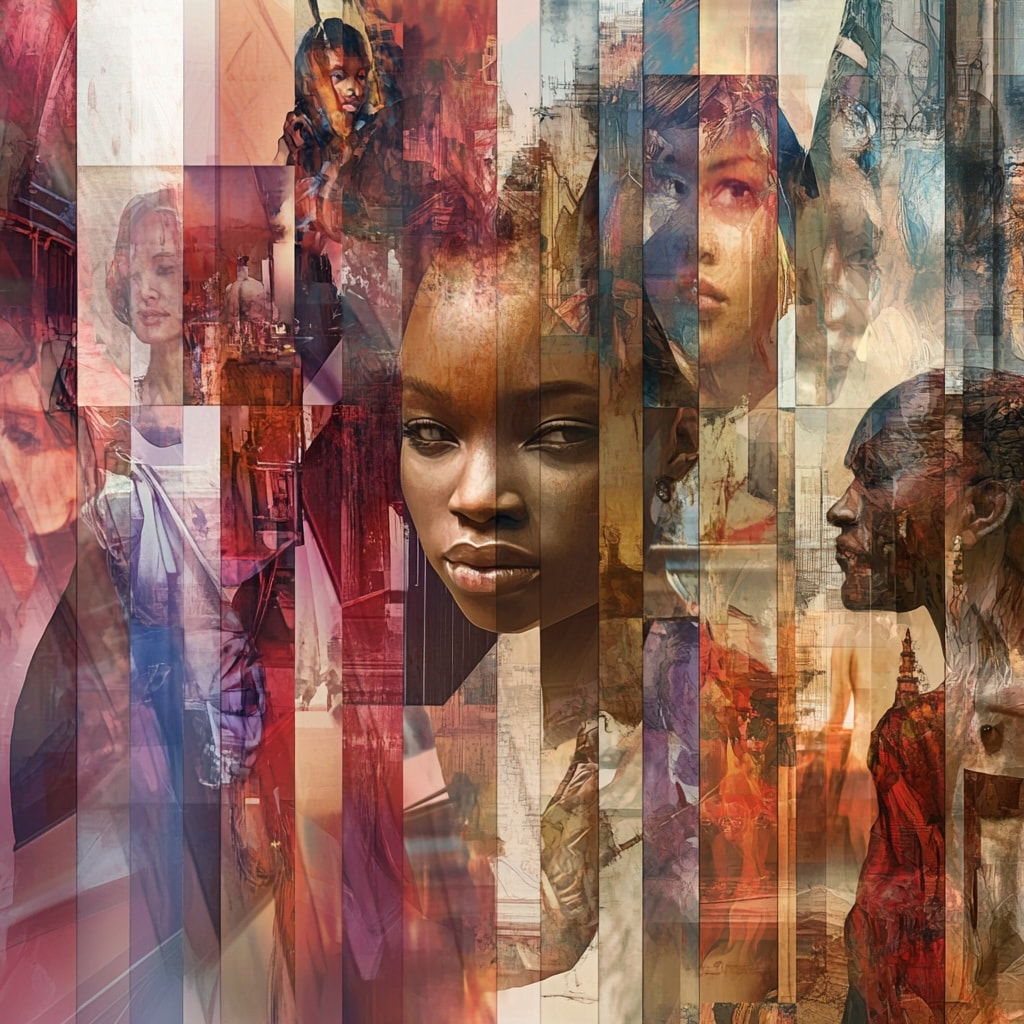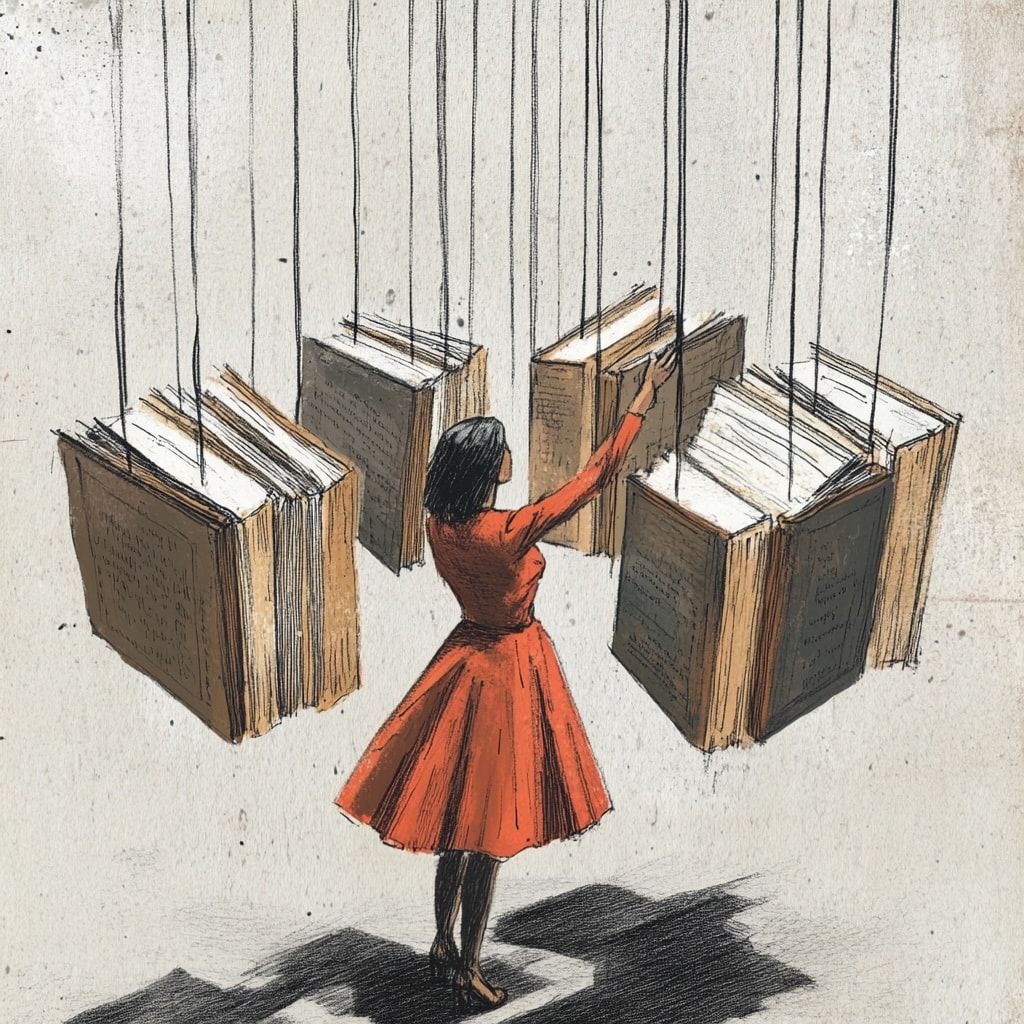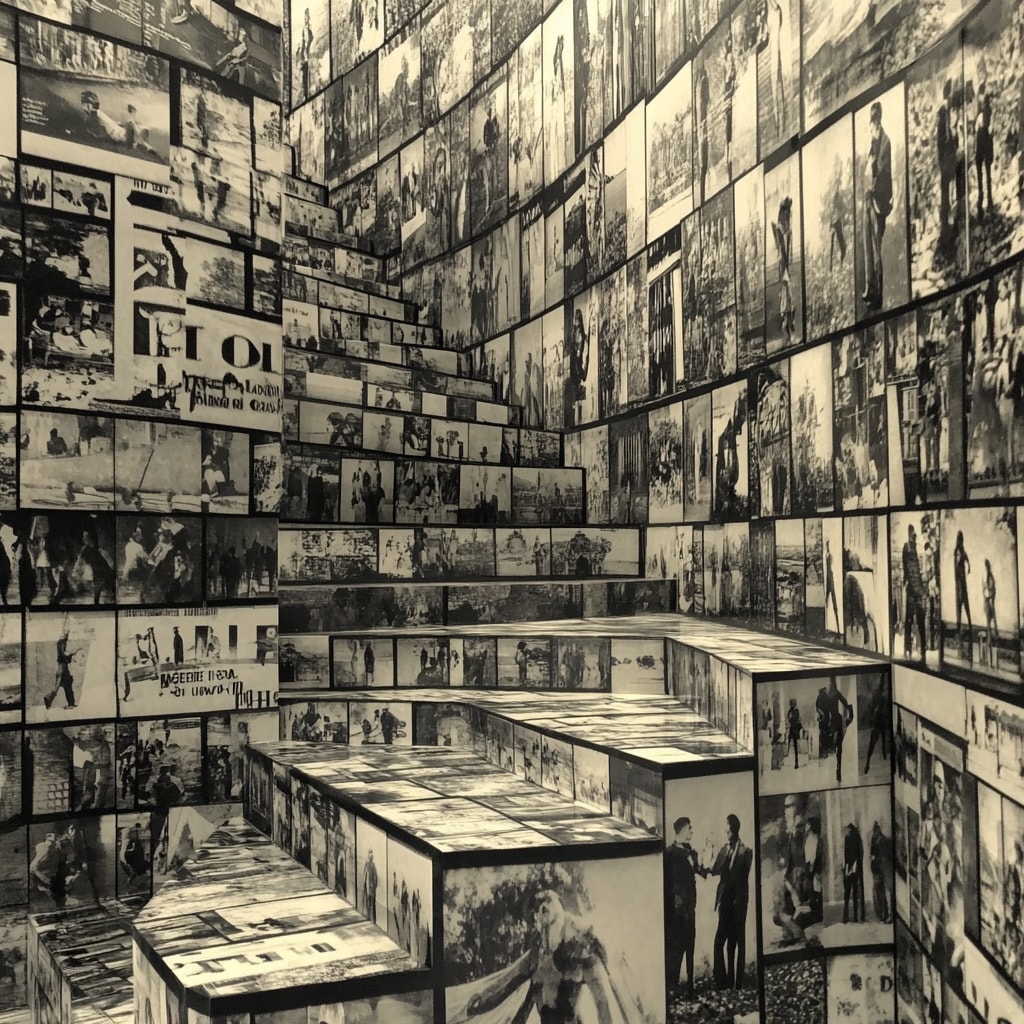
Metafiction: Techniques, Tips, and Top Examples
Metafiction is a style of writing where the story reflects on its own nature as a story. Authors use it to blur the lines between fiction and reality, making readers aware of the narrative’s constructed nature. In other words, metafiction means a form of storytelling that draws attention to its own artificiality and the process of its creation. Through characters who know they are fictional or direct authorial commentary, metafiction challenges our understanding of storytelling. In this article, we’ll explore what metafiction is, how it’s used, and some key examples.
-
Metafiction is a self-referential narrative style that blurs the boundaries between fiction and reality, prompting readers to engage critically with the nature of storytelling.
-
Key characteristics of metafiction include self-referentiality, breaking the fourth wall, and experimental narrative techniques, all of which enhance reader engagement.
-
Notable examples of metafiction in literature and film, such as ‘Don Quixote’ and ‘Deadpool,’ illustrate how these techniques challenge traditional narrative forms and invite audiences to reflect on the constructed nature of narratives.
When discussing literary concepts like metafiction, having clear definitions is essential for understanding and analysis.
Metafiction is a unique narrative style that highlights the distinction between the real and fictional worlds. It often blurs these boundaries, creating a self-conscious and reflective experience for the reader, who becomes acutely aware of the constructed nature of the story. A strong idea is crucial when creating metafictional works, as it shapes how these self-referential techniques are applied and ensures the narrative remains engaging and purposeful.
Delving into the definition and historical context of metafiction sets the stage for a deeper understanding of its key characteristics and applications.
Be sure to explore our catalog and sign up for more great posts like this one.

Definition of Metafiction
Metafiction is a genre of literary fiction that is self-conscious and self-referential, often breaking the fourth wall to remind the reader that they are engaging with a fictional narrative. According to Patricia Waugh, metafiction is a form of fictional writing that consciously draws attention to its status as an artifact, thereby exploring the relationship between fiction and reality. Unlike traditional fiction, where the narrative maintains an illusion of reality, metafiction keeps the audience constantly aware of its artificial nature. This genre often features narrators or characters who are aware of their fictional status, creating a metafictional paradox that prompts readers to reflect critically on the nature of storytelling itself.
One of the main purposes of metafiction is to provide commentary on the fictional characters and their self-contained world, often using humor and irony to challenge the reader’s perception of reality. Metafiction as a form of fictional writing is characterized by its experimental approach, frequently breaking the fourth wall and questioning traditional narrative conventions. Common forms of metafiction include narrators speaking directly to the reader, stories within stories, and authors inserting themselves into the narrative.
Such techniques prompt readers to reflect on the conventions of fiction, literary devices, and the author’s role in crafting a narrative. Metafiction is often described as 'meta', functioning as self-aware, self-reflective literature that comments on its own artifice, narrative conventions, or storytelling process.
Historical Context of Metafiction
The roots of metafiction can be traced back to the modernist literary movement, which sought to break away from traditional narrative forms and explore the subjective nature of reality. However, it was during the rise of postmodern fiction in the 1960s that metafiction truly came into its own. Postmodern literature, characterized by fragmented narratives and unreliable narrators, provided a fertile ground for the development of self-conscious fiction. Metafiction is closely linked to postmodernism, as postmodernist authors use metafictional techniques to challenge perceptions of reality and fiction, provoking readers to question what is real within the narrative and in the broader societal context.
Notable authors such as John Barth and Margaret Atwood have used metafiction to offer a self-reflexive lens through which to view storytelling. One significant variant of postmodern metafiction is historiographic metafiction, which challenges the perception of historical narratives by presenting multiple truths and questioning objective accounts. Metafiction often interacts with and subverts traditional genres, playing with genre conventions to challenge norms and reshape reader expectations. This approach not only critiques traditional historical narratives but also invites readers to consider the subjective nature of history itself. Over time, various aspects of metafiction—such as its self-reflexivity, questioning of reality, and engagement with readers—have evolved, revealing the complexity and purpose of metafictional works.

Key Characteristics of Metafiction
Metafiction serves as a method for authors to examine and critique the conventions of storytelling. Its key characteristics include self-referentiality, self-consciousness, breaking the fourth wall, and experimental narrative techniques. Metafiction often subverts or plays with familiar tropes, using them to challenge genre expectations and engage readers in self-aware commentary. These features make metafiction a unique and engaging genre that prompts readers to reflect on the nature of fiction.
Each of these characteristics will be explored in detail, illustrating their contributions to the metafictional experience. Metafiction systematically draws attention to its own construction, encouraging readers to recognize the artificiality of the narrative and question traditional storytelling boundaries.
Self-Referentiality and Self-Consciousness
Self-referentiality and self-consciousness are hallmarks of metafiction. Characters or narrators in metafictional works often reference their own fictional status, expressing awareness that they are part of a fictional narrative and a narcissistic narrative. Metafiction self consciously draws attention to its own artificiality, deliberately making the reader aware of the constructed nature of the story. This approach fosters self-reflection and questioning of events within the story, creating a narrative that comments on itself.
Discussing the writing process or writing fiction conventions within the narrative adds another layer of self-awareness. This technique draws attention to the constructed nature of the narrative, making readers more aware of the artifice involved. Novels may blur the boundaries of reality by referencing themselves within the fictional world, enhancing the reader’s engagement and prompting them to question the nature of storytelling itself.
Breaking the Fourth Wall
Breaking the fourth wall is a common technique in metafiction where characters or narrators directly acknowledge the reader’s presence, effectively shattering the imaginary boundary that separates the fictional world from the real world. Often, this involves having the narrator or character address the reader directly, making the audience acutely aware of their role in the story. This technique makes readers question what is fiction and what is true, enhancing their engagement with the narrative.
Examples of breaking the fourth wall include Ferris Bueller’s Day Off, where the protagonist frequently speaks directly to the audience, making them feel involved in the plot. Similarly, Deadpool humorously references other Marvel films and characters during his dialogues, further engaging with the audience through self-awareness.
Such techniques challenge perceptions of reality and fiction, prompting deeper engagement with the text.
Experimental Narrative Techniques
Metafiction often employs experimental narrative techniques such as nonlinear narratives, unconventional plots, and fragmented storytelling. A nonlinear narrative structure, for example, tells stories in a non-traditional order, which can effectively depict chaos and memory. This approach challenges traditional storytelling by disrupting the chronological flow and inviting readers to piece together the narrative from different angles.
Fragmented storytelling in metafiction may consist of:
-
chapters
-
documents
-
vignettes
These elements collectively form a complete narrative. Unconventional plot development is often used to critique genre conventions, raising questions about narrative expectations and structure. Metafictional works may also include an artifact—either physical or conceptual—within the narrative to emphasize the constructed nature of the story and highlight its self-awareness.
These techniques not only enhance reader engagement but also encourage them to actively participate in constructing the story.
Examples of Metafiction in Literature
The emergence of metafiction is closely linked to the rise of postmodern literature from the 1960s onwards. Notable examples of metafictional writing include works by John Barth, Margaret Atwood, and Kurt Vonnegut, among others. Metafiction often references other books and incorporates allusions to create layered narratives, emphasizing the interconnectedness of literature and enhancing the complexity of the text.
Three significant examples of metafiction in literature will be highlighted, showcasing how these authors employed metafictional techniques to create engaging and reflective narratives.

Don Quixote by Miguel de Cervantes
Don Quixote, written by Miguel de Cervantes, is a pioneering work that has influenced the development of the modern novel. The protagonist, Don Quixote, frequently confuses fiction with reality, believing himself to be a knight in a world of adventure. This confusion leads to various misguided adventures that highlight his perception of chivalry and heroism.
Don Quixote's metafictional elements invite readers to question the nature of reality and fiction. The novel's playful engagement with literary conventions and its self-referential nature make it a classic example of metafiction that continues to resonate with readers today.
Slaughterhouse-Five by Kurt Vonnegut
Slaughterhouse-Five by Kurt Vonnegut is classified as historiographic metafiction, blending historical events with fiction to create a unique narrative. Vonnegut includes himself as a character in the novel, further blurring the lines between reality and fiction. The narrative follows the perspective of an American soldier, Billy Pilgrim, who becomes “unstuck in time” and experiences events out of chronological order.
Vonnegut's use of metafiction emphasizes the bias and lack of objectivity in historical accounts, prompting readers to question the nature of historical narratives. By blending fiction with historical events, Slaughterhouse-Five challenges readers' perception of reality and invites them to reflect on the constructed nature of history.
The Handmaid's Tale by Margaret Atwood
The Handmaid's Tale by Margaret Atwood is another notable example of metafiction. The novel's epilogue serves as a critique of the historical interpretation of the main narrative, presenting it as a fictional account that has been studied and analyzed by future historians. This metafictional twist encourages readers to question the reliability of historical narratives and the ways in which stories are interpreted over time.
Atwood's use of metafictional elements in The Handmaid's Tale not only enhances the narrative but also invites readers to reflect on the nature of storytelling and the power dynamics involved in the creation and interpretation of history.
Metafiction Techniques for Writers
For writers interested in exploring metafiction, there are various techniques that can be employed to create engaging and self-reflective narratives. If you want to write metafiction, it's important to understand how to use self-awareness, break the fourth wall, and question reality within your stories. Learning how to write metafictional works involves mastering these techniques and understanding their purpose in challenging traditional storytelling. Practical advice on incorporating metafictional elements into your writing will be provided, focusing on creating self-aware characters, utilizing authorial intrusion, and experimenting with narrative structure.
These metafictional techniques not only challenge conventions but can also add deeper meaning to your story by prompting readers to question reality and the nature of fiction itself. However, don't forget to maintain emotional engagement and authenticity, ensuring that your experimentation with form still resonates with readers on a personal level.

Creating Self-Aware Characters
One of the most effective ways to incorporate metafiction into your writing is by creating self-aware characters who recognize their fictional nature. The main character in metafiction may be aware of their fictional status and reflect on their own existence within the story. Main characters can interact with the audience or comment on their roles, further emphasizing their significance and self-awareness. These characters can comment on the narrative structure, express awareness of their roles within the story, and even interact directly with the audience. This approach adds a layer of self-consciousness to the narrative, encouraging readers to reflect on the constructed nature of fiction.
Creating self-aware characters enables writers to playfully engage with storytelling conventions and prompt readers to question the boundaries between reality and fiction. The narrator in metafiction often becomes self-reflective, sometimes breaking the fourth wall or challenging the reader's expectations. This approach can be particularly effective in stories that aim to critique or subvert traditional narrative forms. The narrator offers commentary or presents multiple perspectives within the story, further highlighting the metafictional elements.
Utilizing Authorial Intrusion
Authorial intrusion is another powerful metafictional technique that involves the author inserting themselves or their commentary into the narrative. This can be done through direct comments on the narrative style, the author’s influence on the story, or even by including the author as a character. By doing so, writers can promote self-reflexivity and engage readers on a deeper level. Metafictional works often use authorial intrusion to explore the theory behind storytelling, examining how narratives are constructed and controlled.
When characters comment on the narrative or the author’s role, it creates opportunities for authorial commentary and enhances the metafictional experience. This method disrupts the reader’s immersion, encouraging reflection on the writing process and the nature of storytelling itself.
Experimenting with Narrative Structure
Experimenting with narrative structure is a hallmark of metafiction, allowing writers to break free from traditional storytelling conventions and explore innovative forms. Techniques such as nonlinear timelines, flashbacks, and fragmented storytelling can create complexity and depth in the narrative, inviting readers to actively participate in constructing the story.
Experimental approaches enhance reader engagement and challenge conventional plot expectations, encouraging readers to question the nature of narrative and storytelling. By exploring different narrative forms, writers can create unique and thought-provoking metafictional works.
Reading and Interpreting Metafiction
Reading and interpreting contemporary metafiction requires a keen awareness of its self-referential nature and the techniques used to blur the lines between fiction and reality, as noted by literary critics.
Reading and Interpreting Metafiction
Reading and interpreting contemporary metafiction requires a keen awareness of its self-referential nature and the techniques used to blur the lines between fiction and reality, as noted by literary critics.
Guidance on recognizing metafictional elements in literature and analyzing their purpose and impact on the reader will be provided.
Recognizing Metafictional Elements
To recognize metafictional elements, readers should look for:
-
Self-aware characters who acknowledge their fictional nature
-
Characters who engage directly with the audience
-
Characters that show awareness of the narrative structure
-
Characters that understand their roles within the story
These elements add layers of self-consciousness and self-reflexivity.
Metafictional works often blur the lines between fiction and reality, prompting readers to reflect on the nature of truth in storytelling within a fictional work. By identifying these key features, readers can deepen their engagement with the narrative and appreciate the unique experience that metafiction offers.
Analyzing the Purpose and Impact
Analyzing the purpose and impact of metafiction involves understanding why authors choose to employ these techniques and how they affect the reader. Self-aware characters and authorial intrusion can enhance the metafictional experience by explicitly acknowledging the narrative structure and the roles within it. This approach can disrupt the reader's immersion, prompting them to reflect on the writing process and the conventions of storytelling.
The direct communication between characters and the audience, as seen in works like Ferris Bueller's Day Off, creates a participatory experience that blurs the line between fiction and reality. Engaging with metafictional elements encourages readers to think critically about storytelling and the constructed nature of narratives, leading to a deeper and more reflective reading experience.
Metafiction in Other Media
Metafiction extends beyond literature, influencing various forms of media, including film and television. As a form of art, metafiction often blurs the boundaries between art and reality, inviting audiences to reflect on the nature of storytelling itself. Additionally, metafiction challenges traditional realism in storytelling by exposing the constructed nature of narratives and breaking the illusion of a seamless, lifelike story. The techniques and characteristics of metafiction can be found in notable films that engage directly with the audience and blur the lines between fiction and reality.
Two significant examples of metafiction in film will be explored: Deadpool (2016) and Ferris Bueller’s Day Off (1987).

Deadpool (2016)
Deadpool (2016) is a prime example of metafiction in film, featuring Wade Wilson as the protagonist who frequently breaks the fourth wall. Wade's awareness of being a fictional character allows for direct engagement with the audience, often through humorous references to other Marvel films and characters. This self-awareness adds layers to the narrative, making viewers question what is part of the story and what is a playful nod to the audience's expectations.
The film's use of metafictional techniques challenges viewers' perceptions of reality and fiction, creating a unique viewing experience that is both entertaining and thought-provoking. Breaking the fourth wall, Deadpool invites viewers to be part of the narrative, enhancing their engagement and prompting reflection on the nature of storytelling in film.
Ferris Bueller's Day Off (1987)
Ferris Bueller’s Day Off (1987) is another classic example of metafiction in film, where the protagonist, Ferris Bueller, frequently breaks the fourth wall by speaking directly to the audience. This direct engagement transforms the film into a playful commentary on the nature of reality and fiction, making the audience feel involved in Ferris’s escapades.
Ferris’s interaction with the audience not only enhances the metafictional experience but also creates a sense of complicity, as viewers become active participants in his adventures. Blurring the lines between fiction and reality, Ferris Bueller’s Day Off invites viewers to reflect on the constructed nature of film narratives and the audience’s role in shaping the story.
Summary
Metafiction is a fascinating genre that challenges traditional storytelling by blurring the lines between fiction and reality. Through self-referentiality, breaking the fourth wall, and experimental narrative techniques, metafiction invites readers and viewers to reflect critically on the nature of storytelling and their role within it. By exploring notable examples in literature and film, we gain a deeper understanding of how these techniques create engaging and thought-provoking narratives. Whether you are a reader, writer, or simply a lover of stories, metafiction offers a unique and enriching experience that inspires critical thinking and creativity.
Frequently Asked Questions
What is metafiction?
Metafiction is a genre that highlights its own fictional nature, often breaking the fourth wall to remind readers of the constructed reality of the narrative. This self-awareness invites deeper reflection on the relationship between fiction and reality.
How does metafiction differ from traditional fiction?
Metafiction differs from traditional fiction by incorporating self-aware characters or narrators that recognize their fictional existence, encouraging readers to engage critically with the narrative. This self-reflective approach distinguishes it from more conventional storytelling methods.
Can you give an example of metafiction in literature?
Don Quixote by Miguel de Cervantes exemplifies metafiction through its protagonist's blurring of fiction and reality, as he believes himself to be a knight embarking on grand adventures.
What are some metafictional techniques for writers?
To effectively incorporate metafictional techniques, writers should create self-aware characters, employ authorial intrusion, and experiment with narrative structure. These methods enhance the reader's engagement and challenge conventional storytelling norms.
How can viewers recognize metafiction in films?
Viewers can recognize metafiction in films by observing characters who break the fourth wall and interact directly with the audience, exemplified in films such as "Deadpool" and "Ferris Bueller's Day Off." This technique highlights the self-referential nature of the narrative.




